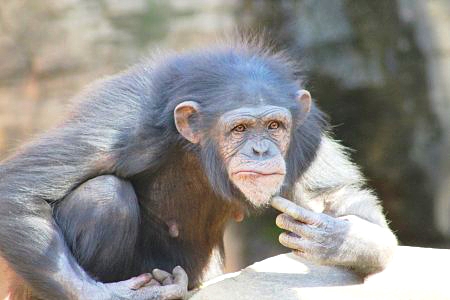The remarkable functionality of the opposable thumb has greatly contributed to the evolutionary success of primates.
If we hadn’t kept our hands away from certain areas, we might have ended up with hairy palms. However, it’s interesting to consider if our hairless palms resulted from our avoidance.
Despite being stigmatized and considered as disgraceful or pitiful in human society, masturbation is a prevalent behavior observed in various animal species. Among our primate relatives, it seems to be quite popular, possibly due to the fact that we all possess hands.
That significantly simplifies the task.
A recently published study has revealed that self-stimulation among primates is indeed a longstanding tradition, spanning a remarkable 40 million years. This behavior might have provided our early ancestors with an evolutionary advantage, contributing to the development of modern humans.
By what means did that occur? Wouldn’t dispersing their seed in the wind have posed additional challenges for our ancestors’ reproduction?
Let’s explore and discover.

Centuries of Primate Shenanigans
In order to conduct their study, the researchers required data on primate self-pleasure behaviors. Therefore, they reached out to a combined total of 150 zoos and primatologists (i.e., biologists specializing in primates) and requested their participation in a questionnaire regarding the intimate habits of these animals.
The investigation did not delve into the examination of human self-pleasure. Perhaps it should have, considering the familial connection to this behavior.
The data collected by the researchers encompassed 38% of the primate species known to date. While not comprehensive, it proved to be sufficient for their analysis.
From this preliminary dataset, certain patterns emerged. According to the findings, 74% of female primates and 84% of males in captivity were observed to engage in masturbation.
In natural habitats, the prevalence drops significantly. In the wild, only 35% of females and 73% of males are observed engaging in self-stimulation.
Next, the scientists inputted the data into a computer model specifically developed to determine the duration of primates’ self-pleasure. In this phase, the researchers extensively studied primate behavior, encompassing their masturbation patterns, mating rituals, and even the incidence of sexually transmitted diseases (STDs).
Subsequently, by integrating the findings with existing knowledge on the evolutionary connections among extinct primate species, the researchers gained insight into the historical extent of primate manual explorations below the belt.
The findings suggest a considerable passage of time.
According to Matilda Brindle, an anthropologist from the University College London, the act of masturbation was likely practiced by the ancestor of all monkeys and apes approximately 40 million years ago.
And that’s only referring to the male primates. While females engage in masturbation less frequently, they have been doing it for an even longer period – for at least 45 million years.
Additional Data Required for Advancing Scientific Knowledge
Indeed, that’s quite a significant duration dedicated to engaging in such activities. However, what motivated our earliest ancestors to direct their attention towards their private regions?
Regrettably, the research team lacked a sufficient amount of data regarding primates engaging in self-stimulation, which hindered their ability to provide definitive answers. Nevertheless, they are capable of making informed speculations.
One hypothesis put forth by the researchers proposes that male primates engage in sexual release to rid their reproductive system of pathogens. This theory is supported by an observation that species prone to a high prevalence of sexually transmitted diseases exhibit a higher frequency of masturbation.
Reduced viral load contributes to healthier primates, leading to increased reproductive success and higher offspring numbers.
An aroused male typically experiences quicker ejaculation, which benefits less socially dominant primates by allowing them to perpetuate their lineage before being displaced by dominant individuals.
In the case of females, the hypothesis of pipe cleaning may not apply, but there is another possible evolutionary benefit. Engaging in pre-coital masturbation can reduce the acidity of the female reproductive tract, enhancing the survival of sperm.
Again, more babies.
These snippets of information suggest that masturbation could play a role in the transmission of genes among primates. This could provide an explanation for why this behavior has persisted for 40 million years, reaching all the way to modern humans.
The research team, however, seeks definitive answers rather than mere conjectures. This is why they are currently seeking additional data on primate masturbation, aiming to gather more substantial evidence.
Brindle explained, “Our intention was to gather data on the frequency of masturbation as well, but unfortunately, we lacked sufficient information to perform substantial analyses.”
“I have a strong interest in delving deeper into these hypotheses, leveraging a larger dataset, and unraveling the potential explanations for masturbation across various species, taking into account different ecological and social contexts,” expressed the researcher.
Specifically, the research team is keen on acquiring further insights into the masturbation behaviors of female primates. The available data pertaining to them was notably incomplete, possibly due to the females being more discreet about their personal indulgence.
Stay tuned for our upcoming episode as we delve into the motivations behind studying primate self-pleasure.


